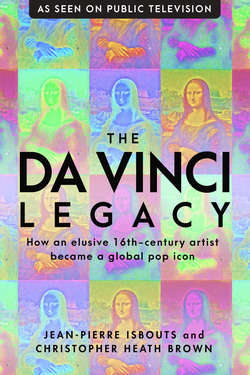Читать книгу The da Vinci Legacy - Jean-Pierre Isbouts - Страница 16
На сайте Литреса книга снята с продажи.
The Interlude of 1499–1506
ОглавлениеIn 1499, when the pigments of the Last Supper were not yet dry, Leonardo’s tenure at the ducal court in Milan came to an end. The year before, the French king Louis XII had suddenly turned on Ludovico Sforza, his erstwhile ally, and marched south to enforce his own claim on the Duchy of Milan. Ludovico had no choice but to flee.
The collapse of the Sforza regime prompted the inevitable breakup of Leonardo’s studio and the dispersal of his followers. Leonardo himself fled to Venice, before returning to Florence. Marco d’Oggiono left for his native town of Lecco, and later for Savona. Boltraffio found refuge in Bologna, where he absorbed the art styles of the Emilia region. Only a few of Leonardo’s assistants, including Fernando Yáñez de la Almedina and Hernando de los Llanos, joined him in Florence to work on his 1504 fresco of the Battle of Anghiari (abandoned in 1506) in the Palazzo della Signoria.
While staying in Florence, bereft of the ducal retainer he had enjoyed in Milan, Leonardo found himself in considerable financial difficulty. In March of 1503, he was forced to withdraw fifty gold florins from his savings account at the Ospedale di Santa Maria Nuova—and continued to do so, every three months, until the summer.15 So dire were his financial straits that he reluctantly accepted a commission to paint a portrait of a Florentine housewife, a woman named Lisa Gherardini, who was married to a silk merchant named Francesco del Giocondo. Just a few years earlier, he had refused to complete a portrait for a far more influential lady, Isabella d’Este, the Marchesa of Mantua.
Was it just the immediate need for cash that prompted Leonardo to paint the lovely Lisa? Leonardo may have had another inducement for painting the portrait, which became known as the Mona Lisa. In 1504, he signed a contract with the Signoria, the republican government of Florence, to paint the fresco of the Battle of Anghiari in the Palazzo della Signoria, the government building now known as the Palazzo Vecchio. That was quite astonishing. Everyone knew that the president of the Signoria, the gonfaloniere Piero Soderini, strongly favored Michelangelo for the project. Leonardo’s agreement to paint a portrait of Lisa may have been a quid pro quo arrangement, for the Giocondo family was known to wield a lot of influence at various levels of the Florentine government.16 Giocondo may have agreed to use his connections and secure the lucrative Anghiari commission for Leonardo—if the artist would agree to indulge him with a small portrait of his wife.
Leonardo da Vinci, Battle of Anghiari, ca. 1504. Copy by Peter Paul Rubens, ca. 1603.
The Anghiari project could have been Leonardo’s greatest triumph. Unfortunately, Leonardo couldn’t help but indulge his fascination with experimental pigments. As in the case of the Last Supper, the quick-drying tempera technique didn’t suit him; he wanted to move slowly, deliberately, applying layer upon delicate layer, so as to achieve the rich three-dimensional effects of his oil-on-panel technique. To do so, he needed an undercoat that could absorb multiple layers of oil paints. According to the anonymous author known as Anonimo Gaddiano, Leonardo created a unique concoction based on Pliny the Elder’s book Natural History, which recommended the use of Greek pitch to seal the plaster wall. But the experiment failed; the wall refused to absorb the pigments, causing the paint to drip and run. Paolo Giovio later wrote that the undercoat turned out to be “resistant to paints mixed with walnut oil.” As with the Last Supper, the fresco began to deteriorate almost as soon as Leonardo’s brush left it.17
What remained was still magnificent enough to attract a steady stream of artists and visitors for the next half century. As Paolo Giovio wrote, “our sorrow for the unforeseen damage seems only to have wondrously increased the fascination of the unfinished work.” Several copies were made, including an oil painting known as the Tavola Doria, which reveal that the core of the painting, the battle for the standard, or banner of the Milanese army, was already far advanced, even though the standard itself is missing; only the pole is visible.18
